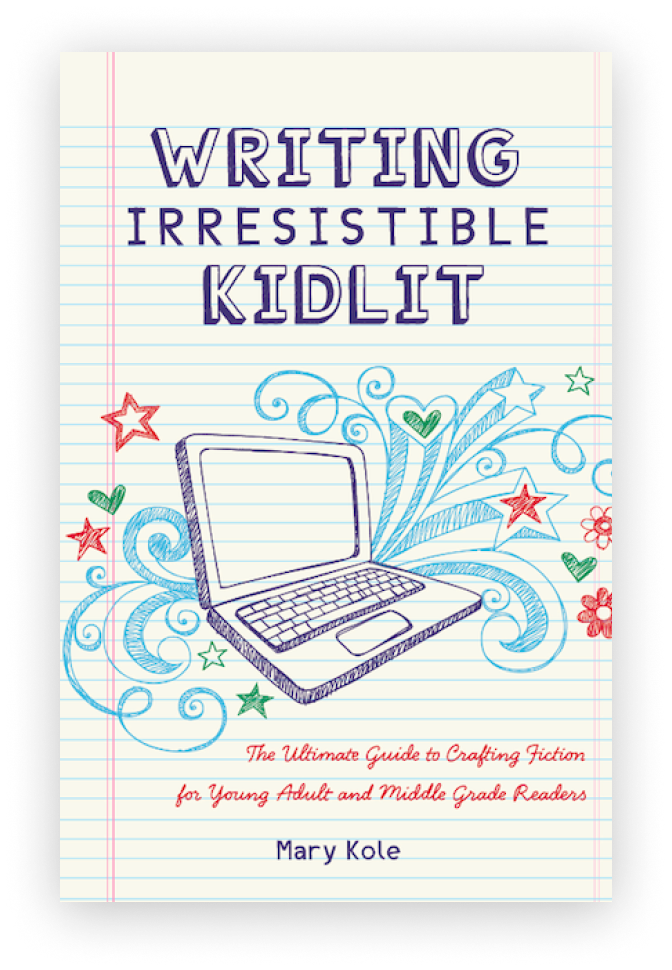The Power of the Novel Outline
By Mary Kole
Mary Kole is a former literary agent, freelance editor, writing teacher, author of Writing Irresistible Kidlit, and IP developer for major publishers, with over a decade in the publishing industry.
If you haven’t tried writing a novel outline for your fiction or creative nonfiction yet, what are you waiting for? Writing a novel or memoir can be an intimidating process, and the sheer volume of information that you have to juggle is enough to fill … well … a book. You have a story to tell, but how do you go about putting it all together? There are plenty of different approaches to writing, but one of the most popular and effective is planning out your story ahead of time with a novel outline. Here, I’ll explore why the novel outline is so powerful and how it can help you write a better novel or memoir from the ground up.
What Makes a Novel Outline So Powerful?
Outlines are powerful tools because they provide structure and guidance while still allowing plenty of room for creativity in the writing process. Many writers would come to me at a conference and ask, “Are you sure I have to write the whole thing before I know whether it’ll sell?” And yes, in almost all cases of fiction and most cases of memoir, you have to write the whole draft first before you can pitch your manuscript to a literary agent or publishing house.
There’s no way around that, per se, but if you write a novel outline, you will be able to better sense whether you have enough ideas for a novel before you sit down to write it. How do you know if there’s a “there” there with your book idea?
With a novel outline, you’re not only thinking through the key elements of your story ahead of the drafting process, but you can organize your thoughts, come up with plot points (to avoid that dreaded muddy middle), and make sure your character arcs track. All before you sit down to face the dreaded blank page—and potential writer’s block.
Creating a Novel Outline
Putting a novel or memoir together can feel like putting together a jigsaw puzzle. Writing your novel outline first ensures that you don’t forget any key elements when it comes time to draft. Your novel outline should include a sense of setting, the protagonist, secondary and tertiary characters, plot points, conflicts (internal and external) as well as subplots. It is also important to address any tropes for the genre you are writing in, or the universal theme you want to portray.
In terms of developing characters, you need to dig deeply into your protagonist’s objective, motivation, backstory, character vulnerabilities, and character need. This might also be a great time to do some of your story research, if any. The more information you either get or make up about your story at this point, the more cohesive (and useful) the novel outline will be before you start writing.
Your Novel Outline as a Road Map
Once you’ve created your novel outline with all of the important ingredients of story (whether a fictional one or your own, in the case of autobiography), it’s time to start putting words down on the page! The novel outline is a very useful document during the drafting phase, and even during revision.
Use your novel outline as a guide while writing each chapter or section of your book. Refer back to it often and make sure that each chapter is advancing the plot in some way (in other words, being proactive). The plot should move forward in a cause and effect pattern, with the plot acting on character, and vice versa. Additionally, use your novel outline as a resource for any unexpected ideas or questions that arise during the writing process. If you get a flash of creativity, try to fit any new ideas into the novel outline and make sure they are cohesive with the rest of the story. Or try out big restructuring ideas on the outline first, before changing your entire manuscript. This will help keep your drafting and self-editing flow orderly and ensure that nothing gets left out along the way.
Using a novel outline can be an incredibly helpful tool for novel and memoir writers. Not only does a strong outline provide structure for the writing process, but also gives you a framework for focused creativity. If you’ve never tried it, try it! If you try it and hate it, at least you have another writing tool to take with you on your journey.

Click here to purchase Writing Irresistible Kidlit, my book on fiction craft for MG and YA novels, out from Writer's Digest Books. This will show you my writing craft philosophy and give you lots of valuable advice, including tips for the novel revision process and self-editing. There are over 35 example novels cited and discussed throughout. It’s a valuable resource for any writer’s toolkit.
Click here to purchase Irresistible Query Letters, my book on query letters, including over forty examples with comprehensive notes on each one. There’s a ton of submission advice, best practices, and insider information in these pages, and you’ll really enjoy seeing what other writers are doing in the slush.
Click here to purchase Writing Interiority: Crafting Irresistible Characters, my book on interiority and character creation. Explore your protagonist’s thoughts, feelings, reactions and interpretations, expectations, and inner struggles to create a rich, immersive experience. This guide will empower you to create characters who live and breathe on the page, fostering an unbreakable bond with your audience.





